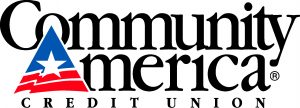Editor’s note: Anita Newton is a board member of STARTLAND, the ecosystem building organization that operates Startland News. This story was produced independently by Startland News’ nonprofit newsroom.
Hiring a teen advisory board to assist the development of CommunityAmerica Credit Union’s new CollegeMatch tool proved helpful — though the team had to scrap everything to start in a direction at their more-than-honest feedback, said Anita Newton.
“Initially, the [CollegeMatch tool] was not what we were planning to build, we had a totally different idea in mind,” laughed Newton, chief innovation officer at the credit union. “It was more like a checklist, or a planning tool, and we lined up our design and UX folks and started out the [teens] with a paper prototype of the tool — and none of them wanted it.”
“They don’t need a checklist [for college,]” added Anita. “What we found is that parents want a checklist. Kids just don’t want to make a mistake. Most of them know their dream school and their safety school, but they don’t know the range in between.”
The new CollegeMatch tool turned out to act like a superpowered filter for students — taking into account dream schools, the distance from family the student is comfortable with, financial aid possibilities, and more, to produce a list of matches with a “fit score,” said Ben Niehues, lead developer for the project.
Click here to check out the CollegeMatch tool.
“It was a good situation where we just failed quickly and found the next best thing,” said Niehues. “We got their feedback of what they liked and didn’t like and so we got a really good sense of our new prototype. Only then did we write one line of code.”
“We’ve gotten really good at having young adults tell us all the reasons why it’s not good and be really smart enough to take the feedback,” added Newton, noting the also teen-powered FAFSAchat tool made in 2018 helped the lab develop a thicker skin as well.
Click here to read more about the development of CommunityAmerica’s FAFSAchat tool.
CollegeMatch provides for objectivity for student’s expectations when evaluating school performance, she said.
“A young adult doesn’t have the context around how his or her performance in a school translates to the national level and what he or she can afford,” Newton said.
“I think we hear over and over that parents want their kids to have the same experience that they did when they went to college, but when I went to the University of Kansas, tuition was $900 a semester and now it’s like $25,000 a year,” she added. “The game has changed. [This is allowing] objective data to help students have more productive conversations with their parents, and it’s stimulating a lot better of conversations around real data versus what we want or hope to happen.”
Most schools have a tool to calculate net costs for families but are rarely fast and easy to use, said Niehues.
“The issue is that they take about 20 to 30 minutes so we created these calculators to help calculate [that information] a little quicker,” he said. “We can look at favorite schools and do a side-by-side comparison and dive a little bit deeper on the details.
The CollegeMatch tool out serves others like it that are more attuned to parents’ needs over those of students, said Newton.
“This is really uniquely designed for kids,” she said. “There really wasn’t a good tool [before this one] that’s mobile friendly and allows a student to compare the 6,000 schools available to them in a way that really helps them decide what’s the best fit.”







































